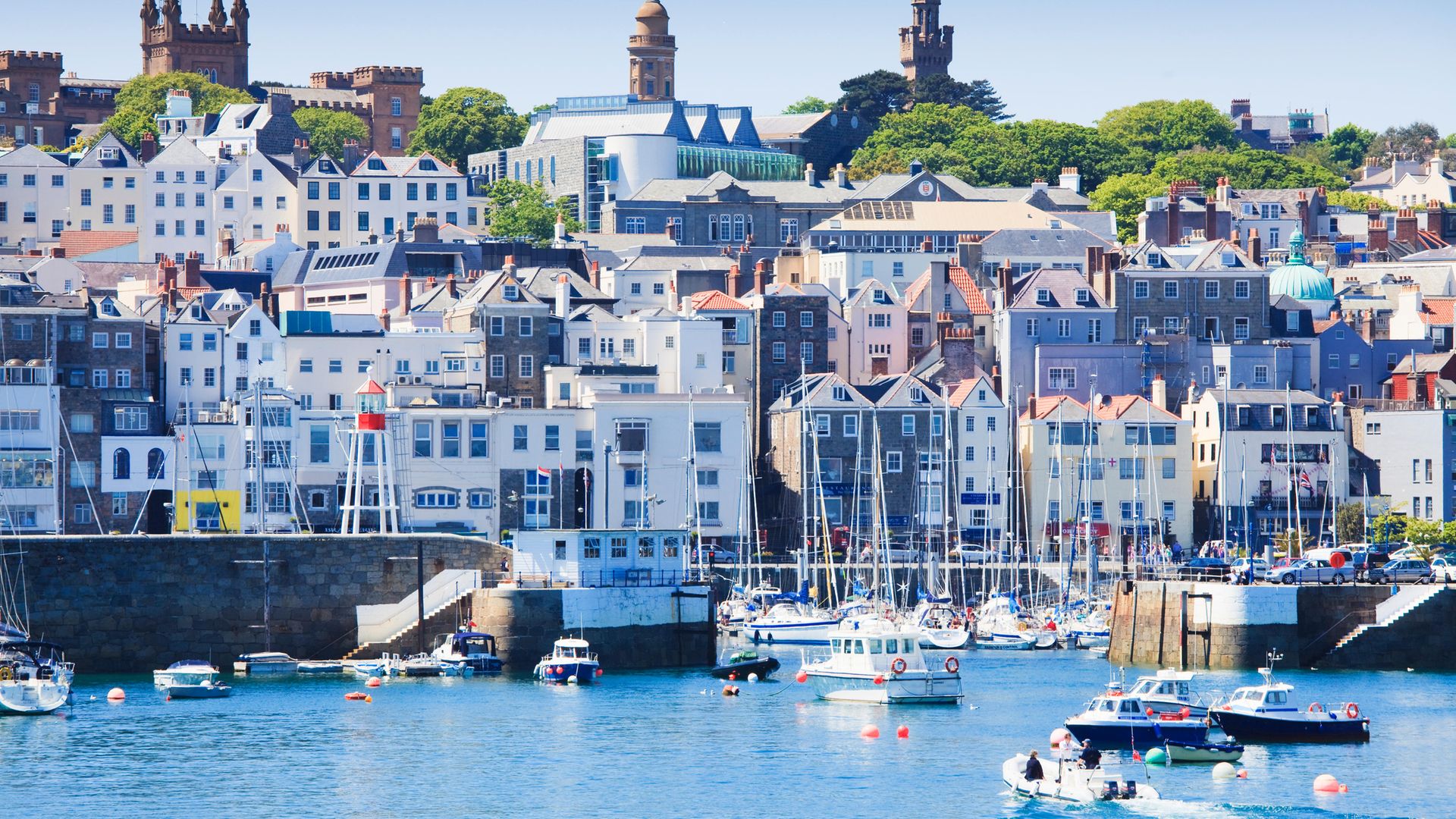
How the archipelago’s dialect hung on for centuries, but is now disappearing
The Channel Islands lie between 70 and 85 nautical miles off the south coast of England. They are very much closer to the Cotentin Peninsula of Normandy in France, which is only about 12 nautical miles away. The islands are not part of the United Kingdom but dependencies of the British Crown, as they have been since 1066, when the ruler of the Duchy of Normandy, William, seized the crown of England.
Norman French, the language which crossed the English Channel to Britain with William the Conqueror and his army in 1066, had died out as a spoken language in Britain and Ireland by 1400. But the language continued to be spoken for another six hundred years in the Channel Islands: Alderney, Guernsey, Herm, Jersey, Sark, and the smaller islets of Jethou and Brecqhou. Like mainland Normandy, the islands were Norman-French speaking in 1066, and they have remained so for many centuries.
Les Îles Anglo-Normandes, as they are often called in French, today constitute two different British Crown dependencies: the Bailiwick of Jersey; and the Bailiwick of Guernsey, which includes Guernsey and the smaller inhabited islands.
The linguistic history of the Channel Islands is complex. Until the 5th century AD, the inhabitants were (probably somewhat Romanised) Celtic Gauls. They were then joined by British Celts, arriving from England as part of the same wave of emigration – most likely flight from the invading Anglo-Saxons – which led to the British settlement of Brittany. In the 800s, Vikings then started arriving in the Channel Islands and on the nearby mainland coast of what we now call Normandy.
These “Northmen” were originally Old Norse-speaking, and the names of some of the islands are still of Old Norse origin. The –ey ending of Alderney, Guernsey and Jersey is the Old Norse word for ‘island’, and the -hou suffix in Jethou, Brecqhou, Lihou and Burhou probably comes from holmr, ‘islet’.
From then on, the linguistic story of the Channel Islands was identical to that of Normandy. Speakers abandoned Old Norse for Old French quite early on, probably late in the 10th century; and the Normans who invaded England in 1066 no longer spoke Norse but Norman French. The Les Îles d’la Manche, as they are known in Norman, remained Norman French speaking for a thousand years, though by 1600 there was also a significant presence of Parisian French on the islands.
Channel Island Norman came in three main variants: the Alderney dialect Auregnais; the Guernsey dialect Guernsiais, divided into Northern and Southern subdialects; and the Jersey dialect, Jèrriais, divided into the Eastern, Western, and Sark or Serquiais subdialects, with Western Jèrriais and Serquiais being especially closely related. Norman dialect pronunciations found in the archipelago include chent ‘hundred’ (French cent), ka ‘cat’ (French chat), and mè ‘me’ (French moi).
Many inhabitants became trilingual in Norman, French and English – there are still some trilingual speakers today – but most Channel Island Norman dialect speakers these days do not speak French, switching to English when they want to communicate with outsiders.
The dialects survived strongly until the 19th century, when immigration from England set in, particularly to Jersey. Norman French dialects died out on Alderney soon after 1900, being replaced by English. For the other islands, estimates in 1960 suggested that there were about 10,000 Norman speakers out of a population of 60,00 on Jersey; today that figure is probably closer to 2,000. In the 1980s there were about 10,000 speakers on Guernsey, with only a few hundred left today. On the island of Sark, on the other hand, nearly all of the indigenous population were still Norman speakers until at least the 1990s; now there are perhaps only 20 native speakers left out of a population of 500.
This gradual, centuries-long disappearance of the Channel Islands Norman varieties is all part of the sad, ongoing linguistic homogenisation of the British Isles.
Holme
Old Norse holmr ‘small island, piece of dry land in a fen’ survives not just in some of the names of the Channel Islands but also in very many Scandinavian place-names such as Stockholm, and in several British place-names like Axholme, Lincolnshire, and Holme-next-the-Sea in Norfolk.










